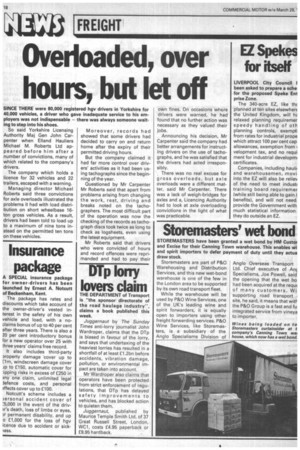Overloaded, over hours, but let off
Page 20

If you've noticed an error in this article please click here to report it so we can fix it.
SINCE THERE were 80,000 registered hgv drivers in Yorkshire for 40,000 vehicles, a driver who gave inadequate service to his employers was not indispensable — there was always someone waiting to step into his shoes.
So said Yorkshire Licensing Authority Ma) Gen John Carpenter when Elland Hauliers Michael M. Roberts Ltd appeared before him after a number of convictions, many of which related to the company's drivers.
The company which holds a licence for 32 vehicles and 22 trailers, escaped with a warning.
Managing director Michael Roberts said three convictions for axle overloads illustrated the problems it had with load distribution on short wheelbase 16ton gross vehicles. As a result, drivers had been told to load up to a maximum of nine tons instead on the permitted ten tons on these vehicles. Moreover, records had showed that some drivers had decided to carry on and return home after the expiry of their permitted driving hours.
But the company claimed it had far more control over drivers' activities as it had been using tachographs since the beginning of the year.
Questioned by Mr Carpenter Mr Roberts said that apart from problems arising from changing the work, rest, driving and breaks noted on the tachographers. The most difficult part of the operation was now the checking of the records as tachograph discs took twice as long to check as logsheets, even using the latest equipment.
Mr Roberts said that drivers who were convicted of hours and record offences were reprimanded and had to pay their own fines. On occasions where drivers were warned, he had found that no further action was necessary as they valued their jobs.
Announcing his decision, Mr Carpenter said the company had better arrangements for instructing drivers on the use of tachographs, and he was satisfied that the drivers had acted irresponsibly.
There was no real excuse for gross overloads, but axle overloads were a different matter, said Mr Carpenter. There was a lack of weigh-bridges for axles and a, Licencing Authority had to look at axle overloading convictions in the light of what was practicable.
























































































































